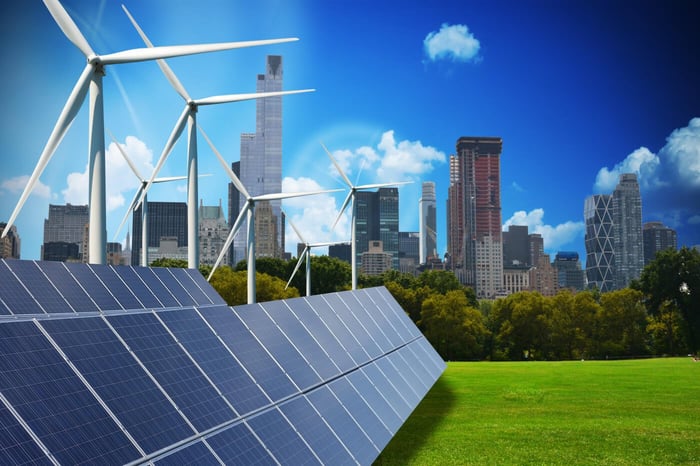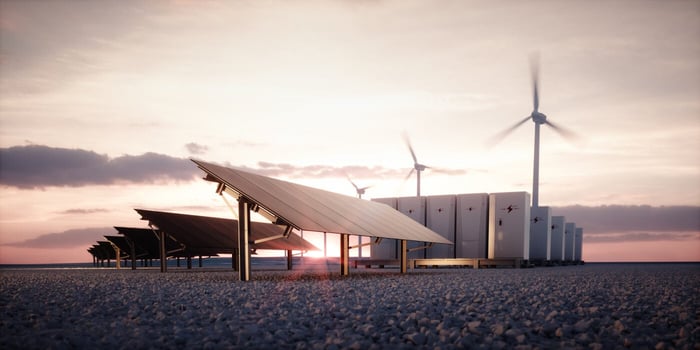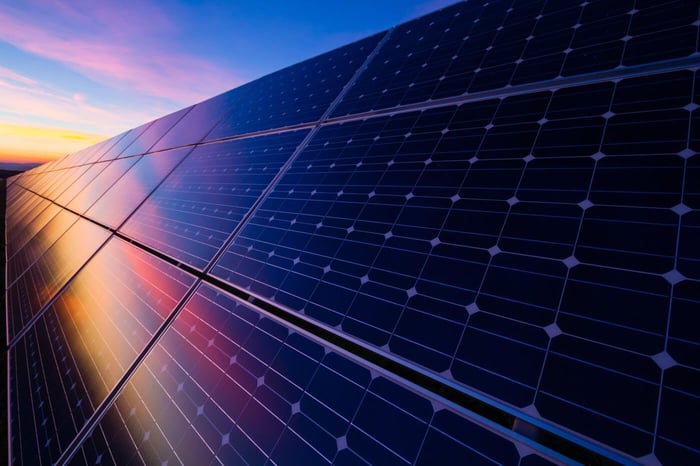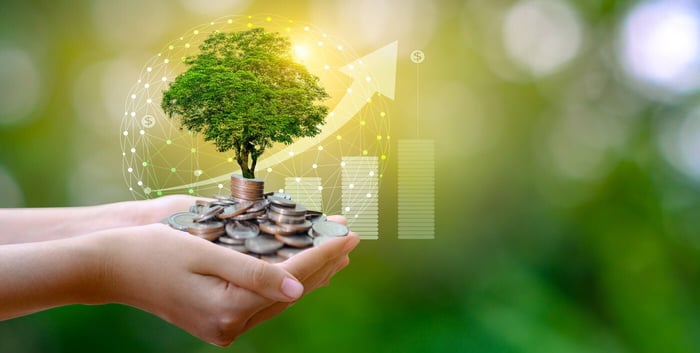Renewable energy refers to energy sources that are replenished naturally and can be sustained indefinitely, such as wind, solar, hydro, and geothermal energy.
What exactly is renewable energy?
Renewable energy ("RE") refers to energy that is derived from natural resources that are replenished naturally on a human timescale, such as sunlight, wind, rain, tides, and geothermal heat. Unlike fossil fuels, which are finite and release harmful emissions when burned, RE sources produce clean, sustainable power and can help mitigate climate change.

What is the difference between renewable energy and conventional power plants?
Conventional power plants use fossil fuels such as coal, oil and natural gas to generate electricity. These fuels are finite and non-renewable, meaning that they will eventually run out and release harmful emissions when burned.
On the other hand, renewable energy sources such as wind, solar, hydro, and geothermal power plants use naturally replenishing resources that do not emit harmful pollutants. This makes RE a cleaner, more sustainable option for producing electricity. Additionally, RE sources are considered renewable because they can be replenished on a human timescale, while the burning of fossil fuels contributes to global warming and climate change.
Why should you consider investing in a renewable energy asset?
1. Environmental benefits: RE sources produce clean, sustainable power and do not emit harmful pollutants like conventional power plants, reducing the impact of energy production on the environment.
2. Sustainability: RE sources are replenished naturally and can be sustained indefinitely, making them a more sustainable option for producing electricity compared to finite fossil fuels.
3. Diversification: Adding a RE investment to your portfolio can diversify your investments and reduce exposure to the ups and downs of financial markets.
4. Growth potential: The demand for RE is growing globally, driven by increasing concerns over climate change and the desire for clean, sustainable power. This growth is expected to continue, providing investment opportunities in the renewable energy sector.
5. Social responsibility: Investing in RE can align with personal values and a sense of social responsibility, as it supports the transition to a cleaner, more sustainable energy future.
How to realize and value a renewable energy investment?
Valuing a RE investment involves assessing its potential future cash flows and the risks involved. The following steps can help:
1. Analyze market trends: Look at the growth potential of the RE market and how the investment fits into the larger industry landscape.
2. Evaluate the technology: Consider the technology used, its competitiveness, and its maturity in the market.
3. Assess project feasibility: Review the technical, financial, and legal feasibility of the project, including the permitting process, site selection, and any regulatory requirements.
4. Consider the project's financials: Analyze the project's projected cash flows, including revenue streams, operating expenses, and capital expenditures by building an advanced financial model for renewable energy investments.
5. Factor in risks: Consider the risks involved in the investment, such as changes in energy prices, technological obsolescence, and the availability of financing.
6. Compare to similar investments: Compare the investment to similar RE projects to determine which projects generate the most return on investment.
7. Hire experts: Consult with financial, legal, and RE experts to help with the evaluation and due diligence process.
It is important to remember that renewable energy investments can be complex and carry risks, so it is important to do thorough research and due diligence before making an investment.
How to build an advanced financial model for renewable energy investments?
Do you want to learn how to build a financial model created explicitly for renewable energy investments? Then check out the Advanced Renewable Energy Financial Modeling course.





